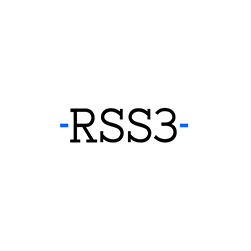Bitget: #4 mondial en volume de trading quotidien!
Part de marché du BTC63.78%
Nouveaux listings sur Bitget : Pi Network
BTC/USDT$96238.89 (-0.32%)Indice Fear and Greed65(Euphorie)
Altcoin Season Index:0(Saison du Bitcoin)
Tokens listés dans Pré-MarchéSIGNTotal des flux nets des ETF Spot Bitcoin +$674.9M (1j) ; +$2.63B (7j).Pack de bienvenue pour les nouveaux utilisateurs d'une valeur de 6200 USDT.Récupérer
Tradez à tout moment et en tout lieu grâce à l'application Bitget ! Télécharger maintenant
Bitget: #4 mondial en volume de trading quotidien!
Part de marché du BTC63.78%
Nouveaux listings sur Bitget : Pi Network
BTC/USDT$96238.89 (-0.32%)Indice Fear and Greed65(Euphorie)
Altcoin Season Index:0(Saison du Bitcoin)
Tokens listés dans Pré-MarchéSIGNTotal des flux nets des ETF Spot Bitcoin +$674.9M (1j) ; +$2.63B (7j).Pack de bienvenue pour les nouveaux utilisateurs d'une valeur de 6200 USDT.Récupérer
Tradez à tout moment et en tout lieu grâce à l'application Bitget ! Télécharger maintenant
Bitget: #4 mondial en volume de trading quotidien!
Part de marché du BTC63.78%
Nouveaux listings sur Bitget : Pi Network
BTC/USDT$96238.89 (-0.32%)Indice Fear and Greed65(Euphorie)
Altcoin Season Index:0(Saison du Bitcoin)
Tokens listés dans Pré-MarchéSIGNTotal des flux nets des ETF Spot Bitcoin +$674.9M (1j) ; +$2.63B (7j).Pack de bienvenue pour les nouveaux utilisateurs d'une valeur de 6200 USDT.Récupérer
Tradez à tout moment et en tout lieu grâce à l'application Bitget ! Télécharger maintenant



Prix de WinWIN
Non listé
Devise de cotation:
EUR
Les données proviennent de fournisseurs tiers. Cette page et les informations qu'elle contient ne recommandent aucune cryptomonnaie en particulier. Vous souhaitez trader des cryptos listées ? Cliquez ici
€0.0002455+8.02%1D
Graphique de prix
Graphique de prix Win (WIN/EUR)
Dernière mise à jour : 2025-05-03 07:13:43(UTC+0)
Capitalisation boursière:--
Capitalisation entièrement diluée:--
Volume (24h):€1,540.82
Vol. (24h) / Cap. boursière:0.00%
Haut (24h):€0.0002466
Bas (24h):€0.0002235
Record historique (ATH):€0.01505
Plus bas niveau historique:€0.0001254
Offre en circulation:-- WIN
Offre totale:
248,300,871WIN
Taux de circulation:0.00%
Offre maximale:
--WIN
Prix en BTC:0.{8}2882 BTC
Prix en ETH:0.{6}1516 ETH
Prix avec la capitalisation du BTC:
--
Prix avec la capitalisation de l'ETH:
--
Contrats:
0xb10c...d036f45(BNB Smart Chain (BEP20))
Plus
Que pensez-vous de Win aujourd'hui ?
Remarque : ces informations sont données à titre indicatif.
Rapport d'analyse IA sur Win
Points clés du marché crypto aujourd’huiVoir le rapport
Prix de Win du jour en EUR
Le prix en temps réel de Win est de €0.0002455 EUR aujourd'hui, avec une capitalisation boursière de €0.00. Le prix de Win a augmenté de 8.02% au cours des dernières 24 heures, et le volume de trading sur 24 heures est de €1,540.82. Le taux de conversion WIN/EUR (Win vers EUR) est mis à jour en temps réel.
Historique des prix de Win (EUR)
Le prix de Win enregistre -83.68% sur un an. Le prix le plus élevé de en EUR au cours de l'année écoulée est de €0.007156 et le prix le plus bas de en EUR au cours de l'année écoulée est de €0.0001254.
HeureVariation de prix (%) Prix le plus bas
Prix le plus bas Prix le plus élevé
Prix le plus élevé 
 Prix le plus bas
Prix le plus bas Prix le plus élevé
Prix le plus élevé 
24h+8.02%€0.0002235€0.0002466
7d+19.95%€0.0001876€0.0002561
30d+38.09%€0.0001289€0.0002575
90d+0.31%€0.0001254€0.0004145
1y-83.68%€0.0001254€0.007156
Tous les temps-94.40%€0.0001254(2025-03-25, il y a 39 jour(s) )€0.01505(2024-01-10, il y a 1an(s) )
Quel est le prix le plus élevé de Win ?
Le record historique (ATH) de Win en EUR est de €0.01505, enregistré le 2024-01-10. Par rapport à l'ATH de Win, le prix actuel de Win est inférieur de 98.37%.
Quel est le prix le plus bas de Win ?
Le plus bas niveau historique (ATL) de Win en EUR est de €0.0001254, enregistré le 2025-03-25. Par rapport à l'ATL de Win, le prix actuel de Win est supérieur de 95.79%.
Prédiction de prix de Win
Quel est le bon moment pour acheter WIN ? Dois-je acheter ou vendre WIN maintenant ?
Lorsque vous décidez d'acheter ou de vendre WIN, vous devez d'abord tenir compte de votre stratégie de trading. L'activité de trading des traders à long terme sera également différente de celle des traders à court terme. L'analyse technique Bitget de WIN peut vous fournir une référence pour le trading.
Selon l'analyse technique de WIN (4h), le signal de trading est Achat fort.
Selon l'analyse technique de WIN (1j), le signal de trading est Achat.
Selon l'analyse technique de WIN (1w), le signal de trading est Vente.
Quel sera le prix de WIN en 2026 ?
En se basant sur le modèle de prédiction des performances historiques de WIN, le prix de WIN devrait atteindre €0.0002603 en 2026.
Quel sera le prix de WIN en 2031 ?
En 2031, WIN devrait voir son prix augmenter de +49.00%. D'ici la fin de l'année 2031, WIN devrait voir son prix atteindre €0.0006934, avec un ROI cumulé de +207.23%.
FAQ
Quel est le prix actuel de Win ?
Le prix en temps réel de Win est €0 (WIN/EUR) avec une capitalisation actuelle de €0 EUR. La valeur de Win connaît des fluctuations fréquentes en raison de l'activité continue, 24 heures sur 24 et 7 jours sur 7, du marché des cryptomonnaies. Le prix en temps réel de Win et ses données historiques sont disponibles sur Bitget.
Quel est le volume de trading sur 24 heures de Win ?
Au cours des dernières 24 heures, le volume de trading de Win est de €1,540.82.
Quel est le record historique de Win ?
Le record historique de Win est de €0.01505. Il s'agit du prix le plus élevé de Win depuis son lancement.
Puis-je acheter Win sur Bitget ?
Oui, l'achat de Win est actuellement disponible sur la plateforme d'échange centralisée Bitget. Pour des instructions plus détaillées, pensez à consulter notre guide pratique Comment acheter .
Puis-je gagner des revenus réguliers en investissant dans Win ?
Bien entendu, Bitget fournit une plateforme de trading de stratégie, avec des bots de trading intelligents permettant d'automatiser vos trades et d'engranger des bénéfices.
Où puis-je acheter des Win au meilleur prix ?
Nous avons le plaisir d'annoncer que plateforme de trading de stratégie est désormais disponible sur la plateforme d'échange Bitget. Bitget offre les frais de trading les plus bas du secteur ainsi qu'une profondeur importante afin d'assurer des investissements rentables aux traders.
Avoirs Win
Matrice de distribution des avoirs Win
Avoirs Win par concentration
Baleines
Investisseurs
Particuliers
Adresses Win par durée de détention
Holders
Cruisers
Traders
Graphique en temps réel du prix de coinInfo.name (12)

Prix de Win mondiaux
Combien vaut actuellement Win dans d'autres devises ? Dernière mise à jour : 2025-05-03 07:13:43(UTC+0)
WIN en MXN
Mexican Peso
Mex$0.01WIN en GTQGuatemalan Quetzal
Q0WIN en CLPChilean Peso
CLP$0.26WIN en UGXUgandan Shilling
Sh1.02WIN en HNLHonduran Lempira
L0.01WIN en ZARSouth African Rand
R0.01WIN en TNDTunisian Dinar
د.ت0WIN en IQDIraqi Dinar
ع.د0.36WIN en TWDNew Taiwan Dollar
NT$0.01WIN en RSDSerbian Dinar
дин.0.03WIN en DOPDominican Peso
RD$0.02WIN en MYRMalaysian Ringgit
RM0WIN en GELGeorgian Lari
₾0WIN en UYUUruguayan Peso
$0.01WIN en MADMoroccan Dirham
د.م.0WIN en AZNAzerbaijani Manat
₼0WIN en OMROmani Rial
ر.ع.0WIN en SEKSwedish Krona
kr0WIN en KESKenyan Shilling
Sh0.04WIN en UAHUkrainian Hryvnia
₴0.01- 1
- 2
- 3
- 4
- 5
Nouveaux listings sur Bitget
Nouveaux listings
Acheter plus
Où puis-je acheter des cryptos ?
Achetez des cryptos sur l'application Bitget
Inscrivez-vous en quelques minutes pour acheter des cryptos par carte ou virement bancaire.
Section vidéo – vérifier son identité rapidement

Comment vérifier son identité sur Bitget et se protéger contre les fraudes
1. Connectez-vous à votre compte Bitget.
2. Si vous êtes nouveau sur Bitget, consultez notre guide sur comment créer un compte.
3. Survolez l'icône de votre profil, cliquez sur "Non vérifié" puis sur "Vérifier".
4. Choisissez le pays ou région d'émission de votre pièce d'identité et votre type de document, puis suivez les instructions.
5. Sélectionnez "Vérification mobile" ou "PC" selon votre préférence.
6. Saisissez vos informations personnelles, présentez une copie de votre pièce d'identité et prenez un selfie.
7. Enfin, soumettez votre demande pour terminer la vérification de l'identité.
Les investissements en cryptomonnaies, y compris l'achat de Win en ligne sur Bitget, sont soumis au risque du marché. Bitget fournit des moyens faciles et pratiques pour vous d'acheter des Win, et nous faisons de notre mieux pour informer pleinement nos utilisateurs sur chaque cryptomonnaie que nous offrons sur la plateforme d'échange. Toutefois, nous ne sommes pas responsables des résultats qui pourraient découler de votre achat de Win. Cette page et toute information qui s'y trouve ne constituent pas une recommandation d'une quelconque cryptomonnaie.
Notes Win
Note moyenne de la communauté
4.4
Ce contenu est uniquement destiné à des fins d'information.
Bitget Insights

Miles Deutscher_
8m
Everyone wants to be successful, but most people are lazy.
If you want to win, you need to consistently and relentlessly outwork your competition.
It's that simple.
PEOPLE-3.96%
WIN-0.13%
Msani
18m
$BTC Weekend and volatility has still been pretty low for BTC.
Don't think we'll see too much happening now a lot of the headlines have also come in. Trade war cooled off slightly and we've had a lot of data & earnings come in. Stocks had a 9 day win streak for the first time in 20+ years.
Time for the market to digest it all and we'll see next week if buyers want to keep pushing this higher into the $100K region.
Mid/high timeframe looks good to me.
BTC-0.67%
ME-4.60%
rayanislamq
33m
$BTC Weekend and volatility has still been pretty low for BTC.
Don't think we'll see too much happening now a lot of the headlines have also come in. Trade war cooled off slightly and we've had a lot of data & earnings come in. Stocks had a 9 day win streak for the first time in 20+ years.
Time for the market to digest it all and we'll see next week if buyers want to keep pushing this higher into the $100K region.
BTC-0.67%
WIN-0.13%

Optimus Mario
5h
Hard times doesn't kill men but makes men stronger, we keep reviewing our losses and investigating our wins.
Happy weekend ⛅️
We will win🥇🏆🎖
WIN-0.13%
klawal
7h
Most people miss the bull run… while scrolling TikTok."
But the smart ones? They’re on Bitget stacking sats and altcoins.
Every dip is a setup. Every pump is payday.
Start small. Stay consistent. Win big.
#CryptoLife #BitgetTrading #AltcoinSeason
PEOPLE-3.96%
WIN-0.13%
Actifs liés
Cryptos populaires
Sélection des 8 principales cryptomonnaies par capitalisation boursière.
Récemment ajoutées
Les cryptomonnaies les plus récemment ajoutées.
Capitalisation boursière comparable
Parmi tous les actifs Bitget, ces 8 actifs sont les plus proches de Win en termes de capitalisation boursière.
Infos complémentaires sur Win
Détails de la crypto
En lien avec la crypto
En lien avec le trading
Actualités de la crypto




















.png)












